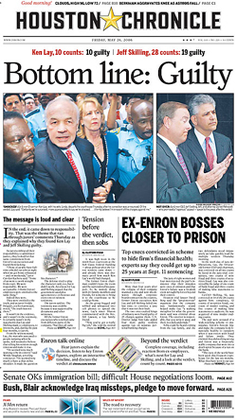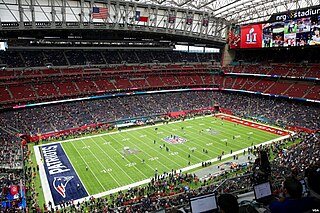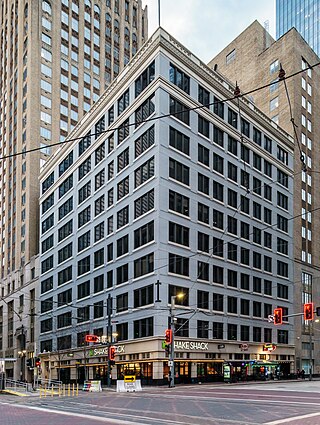Related Research Articles

The Houston Chronicle is the largest daily newspaper in Houston, Texas, United States. As of April 2016, it is the third-largest newspaper by Sunday circulation in the United States, behind only The New York Times and the Los Angeles Times. With the 1995 buyout of its longtime rival the Houston Post, the Chronicle became Houston's newspaper of record.

NRG Stadium is a multi-purpose stadium in Houston, Texas, United States. Construction was completed in 2002, at a cost of $352 million and has a seating capacity of 72,220. It was the first NFL facility to have a retractable roof.
The Houston Livestock Show and Rodeo, also called RodeoHouston or abbreviated HLSR, is the largest livestock exhibition and rodeo in the world. It includes one of the richest regular-season professional rodeo events. It has been held at NRG Stadium in Houston, Texas, since 2003, with the exception of 2021 due to the effects of the COVID-19 pandemic. It was previously held in the Astrodome. It is considered to be the city's "signature event", much like New Orleans's Mardi Gras, Dallas's Texas State Fair, San Diego's Comic-Con and New York City's New Year's Eve at Times Square.

NRG Park, formerly Reliant Park and Astrodomain, is a complex in Houston, named after the energy company NRG Energy. It is located on Kirby Drive at the South Loop West Freeway (I-610). This complex of buildings encompasses 350 acres (1.4 km2) of land and consists of four venues: NRG Stadium, NRG Center, NRG Arena and the NRG Astrodome.

Downtown is the largest central business district in the city of Houston and the largest in the state of Texas, located near the geographic center of the metropolitan area at the confluence of Interstate 10, Interstate 45, and Interstate 69. The 1.84-square-mile (4.8 km2) district, enclosed by the aforementioned highways, contains the original townsite of Houston at the confluence of Buffalo Bayou and White Oak Bayou, a point known as Allen's Landing. Downtown has been the city's preeminent commercial district since its founding in 1836.

Jesse Holman Jones was an American Democratic politician and entrepreneur from Houston, Texas. Jones managed a Tennessee tobacco factory at age fourteen, and at nineteen, he was put in charge of his uncle's lumberyards. Five years later, after his uncle, M. T. Jones, died, Jones moved to Houston to manage his uncle's estate and opened a lumberyard company, which grew quickly. During this period, Jesse opened his own business, the South Texas Lumber Company. He also began to expand into real estate, commercial building, and banking. His commercial building activities in Houston included mid-rise and skyscraper office buildings, hotels and apartments, and movie theaters. He constructed the Foster Building, home to the Houston Chronicle, in exchange for a fifty percent share in the newspaper, of which he acquired control in 1926.

The NRG Center is a convention center in Houston, Texas, and the eighth largest convention center in the United States. It is part of the NRG Park complex that was constructed around the NRG Astrodome and NRG Stadium. The NRG Center hosts various events year-round, including portions of the Houston Livestock Show and Rodeo, which maintains its offices on the second floor of the building. The grand opening of the facility was on April 12, 2002, with the Houston Auto Show. Hermes Reed Architects was the architect for the facility.

Sam Houston Coliseum was an indoor arena located in Houston, Texas.

The Henry B. González Convention Center is the City of San Antonio's convention center located in Downtown San Antonio, Texas, along the banks of the River Walk.

Tranquillity Park is a municipal park in Houston, Texas.

Allen's Landing is the officially recognized birthplace of the city of Houston, Texas, United States, the largest city in Texas and the fourth largest in the United States. Located in Downtown Houston between the Main Street and Fannin Street viaducts, the landing encompasses the southern bank of Buffalo Bayou, the city's principal river, at its confluence with White Oak Bayou, a major tributary. Allen's Landing is located south of the University of Houston–Downtown Commerce Street Building.

The architecture of Houston includes a wide variety of award-winning and historic examples located in various areas of the city of Houston, Texas. From early in its history to current times, the city inspired innovative and challenging building design and construction, as it quickly grew into an internationally recognized commercial and industrial hub of Texas and the United States.
The 1928 Democratic National Convention was held at Sam Houston Hall in Houston, Texas, June 26–28, 1928. The keynote speaker was Claude G. Bowers. The convention resulted in the nomination of Governor Alfred E. Smith of New York for president and Senator Joseph T. Robinson of Arkansas for vice president.

The Rice, formerly the Rice Hotel, is an historic building at 909 Texas Avenue in Downtown Houston, Texas, United States. The current building is the third to occupy the site. It was completed in 1913 on the site of the former Capitol building of the Republic of Texas, and is listed on the National Register of Historic Places. The old Capitol building was operated as a hotel until it was torn down and replaced by a new hotel around 1881. Jesse H. Jones built a new seventeen-story, double-winged hotel in 1913, also called "The Rice Hotel." This building underwent major expansions: adding a third wing in 1925, adding an eighteenth floor in 1951, and adding a five-story "motor lobby" in 1958. In addition, there were several renovations during its life as a hotel. It continued to operate as a hotel before finally shutting down in 1977. After standing vacant for twenty-one years, The Rice was renovated as apartments and reopened in 1998 as the Post Rice Lofts. It was sold in 2014 and renamed simply The Rice.

The Club Quarters Hotel is a 16-story, 61.6 m (202 ft) Beaux-Arts high-rise at 710 Fannin Street in downtown Houston, Texas, United States. The building is listed on the National Register of Historic Places as the Texas State Hotel.

Houston Music Hall was a 2,200-seat music venue located in Houston, Texas. The Music Hall opened in November 1937, at the same time as the Sam Houston Coliseum, which were built conjointly as the brainchild of Jesse H. Jones, and designed by Alfred C. Finn, his frequent collaborator. The project was financed by the Works Progress Administration at a cost of $1.3 million, and replaced Sam Houston Hall, which was a wooden structure that had been erected on the site for the 1928 Democratic National Convention and torn down in 1936.

Alfred Charles Finn was an American architect. He started in the profession with no formal training in 1904 as an apprentice for Sanguinet & Staats. He worked in their offices in Dallas, Fort Worth, and Houston. His credits during his tenure residential structures, but firm was a leader in steel-frame construction of skyscrapers.

The Great Jones Building is a building in Downtown Houston at the intersection of Capitol Street and Main Street.
Avenida Houston (ah-veh-NEE-duh) is the name of the neighborhood generally surrounding the George R. Brown Convention Center in Houston, Texas. It is the finished product of the initial phase of Houston First Corporation’s 2025 GRB Master Plan for redeveloping the eastern edge of downtown.
POST Houston is an entertainment venue in Downtown Houston, Texas, United States which was formerly a major regional post office - then known as Houston Downtown Post Office. The sorting facility was renamed to honor Barbara Jordan. The property is listed on the National Register of Historic Places. From 1887, the area had been developed as Grand Central Station for the Houston and Texas Central Railroad. The Southern Pacific Railroad built a new facility in 1934.
References
- ↑ Fenberg, Stephen (2011). Unprecedented Power: Jesse Jones, Capitalism, and the Common Good. College Station: Texas A&M University Press. pp. 140–141.
- 1 2 Glenn, Mike (11 June 2016). "A downtown lunch helped spark Houston Rodeo". Houston Chronicle. Retrieved 4 November 2018.